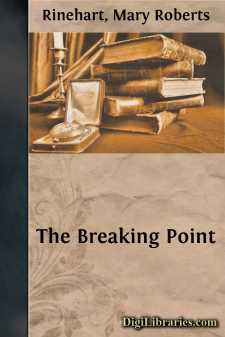Categories
- Antiques & Collectibles 13
- Architecture 36
- Art 48
- Bibles 22
- Biography & Autobiography 813
- Body, Mind & Spirit 142
- Business & Economics 28
- Children's Books 14
- Children's Fiction 11
- Computers 4
- Cooking 94
- Crafts & Hobbies 4
- Drama 346
- Education 46
- Family & Relationships 57
- Fiction 11829
- Games 19
- Gardening 17
- Health & Fitness 34
- History 1377
- House & Home 1
- Humor 147
- Juvenile Fiction 1873
- Juvenile Nonfiction 202
- Language Arts & Disciplines 88
- Law 16
- Literary Collections 686
- Literary Criticism 179
- Mathematics 13
- Medical 41
- Music 40
- Nature 179
- Non-Classifiable 1768
- Performing Arts 7
- Periodicals 1453
- Philosophy 64
- Photography 2
- Poetry 896
- Political Science 203
- Psychology 42
- Reference 154
- Religion 513
- Science 126
- Self-Help 84
- Social Science 81
- Sports & Recreation 34
- Study Aids 3
- Technology & Engineering 59
- Transportation 23
- Travel 463
- True Crime 29
The Amazing Interlude
Categories:
Description:
Excerpt
I
The stage on which we play our little dramas of life and love has for most of us but one setting. It is furnished out with approximately the same things. Characters come, move about and make their final exits through long-familiar doors. And the back drop remains approximately the same from beginning to end. Palace or hovel, forest or sea, it is the background for the moving figures of the play.
So Sara Lee Kennedy had a back drop that had every appearance of permanency. The great Scene Painter apparently intended that there should be no change of set for her. Sara Lee herself certainly expected none.
But now and then amazing things are done on this great stage of ours: lights go down; the back drop, which had given the illusion of solidity, reveals itself transparent. A sort of fairyland transformation takes place. Beyond the once solid wall strange figures move on—a new mise en scène, with the old blotted out in darkness. The lady, whom we left knitting by the fire, becomes a fairy—Sara Lee became a fairy, of a sort—and meets the prince. Adventure, too; and love, of course. And then the lights go out, and it is the same old back drop again, and the lady is back by the fire—but with a memory.
This is the story of Sara Lee Kennedy's memory—and of something more.
The early days of the great war saw Sara Lee playing her part in the setting of a city in Pennsylvania. An ugly city, but a wealthy one. It is only fair to Sara Lee to say that she shared in neither quality. She was far from ugly, and very, very far from rich. She had started her part with a full stage, to carry on the figure, but one by one they had gone away into the wings and had not come back. At nineteen she was alone knitting by the fire, with no idea whatever that the back drop was of painted net, and that beyond it, waiting for its moment, was the forest of adventure. A strange forest, too—one that Sara Lee would not have recognised as a forest. And a prince of course—but a prince as strange and mysterious as the forest.
The end of December, 1914, found Sara Lee quite contented. If it was resignation rather than content, no one but Sara Lee knew the difference. Knitting, too; but not for soldiers. She was, to be candid, knitting an afghan against an interesting event which involved a friend of hers.
Sara Lee rather deplored the event—in her own mind, of course, for in her small circle young unmarried women accepted the major events of life without question, and certainly without conversation. She never, for instance, allowed her Uncle James, with whom she lived, to see her working at the afghan; and even her Aunt Harriet had supposed it to be a sweater until it assumed uncompromising proportions.
Sara Lee's days, up to the twentieth of December, 1914, had been much alike. In the mornings she straightened up her room, which she had copied from one in a woman's magazine, with the result that it gave somehow the impression of a baby's bassinet, being largely dotted Swiss and ribbon....












